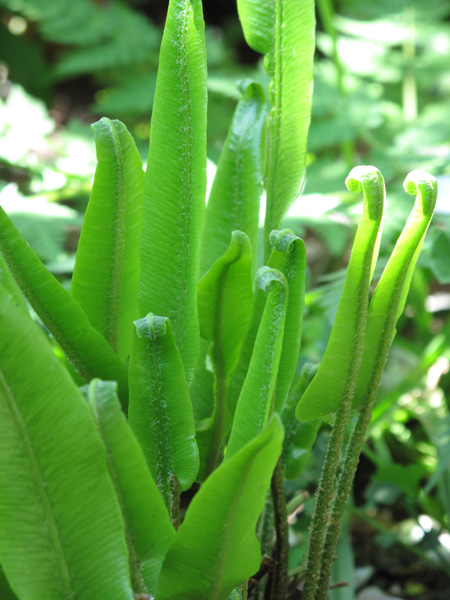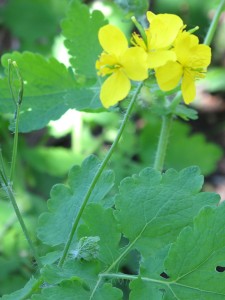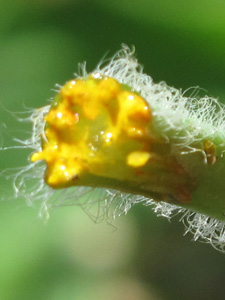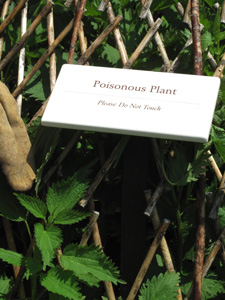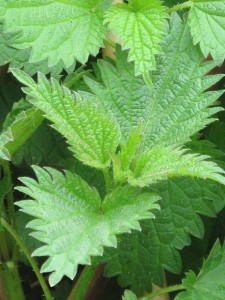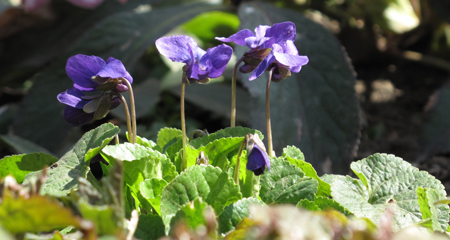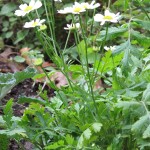Hart’s Tongue
The hart’s tongue fern, named for a fancied resemblance to the tongue of the male red deer, was used medicinally for centuries but is now grown as an ornamental plant. Photograph by Corey Eilhardt
Hart’s tongue fern (Asplenium scolopendrium, also known as Phyllitis scolopendrium) is a European member of a very large family of ferns, the Aspleniaceae, or spleenwort family. The family includes nine genera and some seven hundred species. The straplike leaves were employed in ancient and medieval medicine. Dioscorides remarks on the bitterness of the leaves, but recommends that they be drunk with wine as an antidote to snakebite; he also prescribes a draught of ‘phyllitis’ for dysentery and diarrhea (De Materia medica, III.121). The fifteenth-century Herbarius Latinus advocated a decoction of A. scolopendrium, drunk for forty days, to dissolve blockages of the spleen. The fern was also said to ease gout, clear eyes, heal fresh wounds, cool fever, and remove warts and pustules. The U.C.L.A. Index of Medieval Medical Images??includes a realistic representation of lingua cervina, or deer’s tongue, from an Italian herbal dated to about 1500.
The leathery, undulating fronds of this attractive, easily grown woodland plant are not divided, as many ferns are; ornamental forms with exaggerated undulations (see image) or crested tips have been developed. Although the fern is hardy to U.S.D.A. Zone 5 and is evergreen in milder climates, we find it necessary to remove all the old fronds in early spring.
???Deirdre Larkin
Sources:
Anderson, Frank J., ed. “Herbals through 1500,” The Illustrated Bartsch, Vol. 90. New York: Abaris, 1984.
Griffiths, Mark. The New Royal Horticultural Society Index of Garden Plants. Portland, OR: Timber Press, 1992.
Gunther, Robert T., ed. The Greek Herbal of Dioscorides, translated by John Goodyer 1655. 1934. Reprint: New York: Hafner Publishing, 1968.

